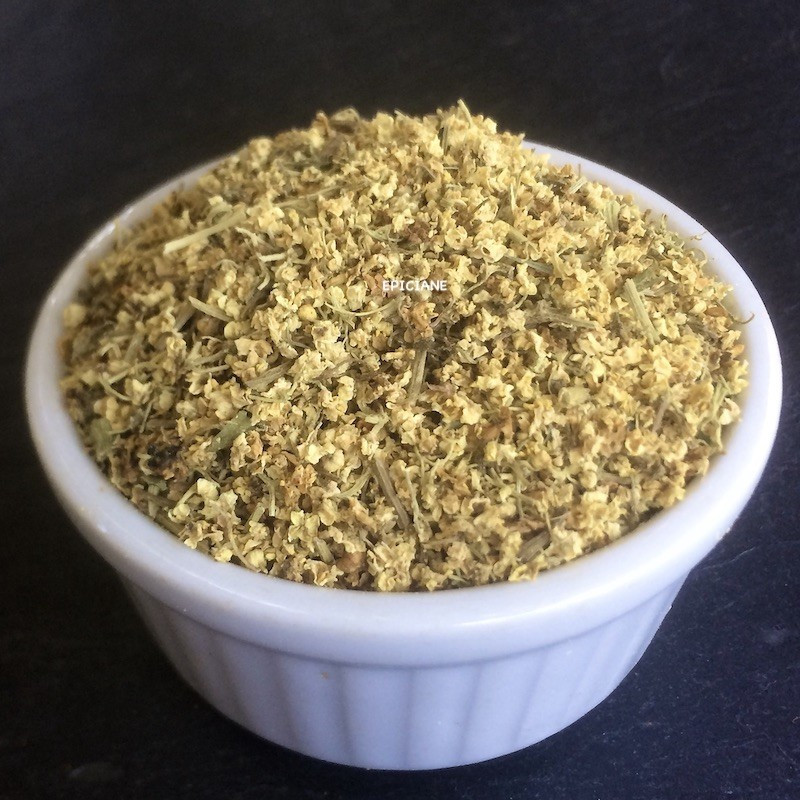
Reference: 20727901


Primarily used in infusions, elderflowers have a mild and pleasant taste.
They offer numerous benefits, particularly in combating seasonal viral infections such as the flu.
 Delivery
Delivery
Mondial Relay
 Returns
Returns
See conditions
 Payments
Payments
100% secure
Produit livré en sachet refermable
°°°
°°°
Information: 80g of elderflowers corresponds to a volume of approximately 1/2 liter.
Uses in Cooking and Beyond:
These are flowers of the black elderberry. Elderflowers have many uses, including infusions, teas, decoctions, juices, syrups, tinctures, candies, poultices, and more.
Gently fragrant, elderflowers are used in the traditional preparation of elderflower wine in some Nordic countries. They can also be made into syrups, jellies, lemonades, kefirs, and even vinegar. For the latter, elderflowers are left to macerate in the sun with wine vinegar, which can then be used in salads. Less commonly, elderflowers appear in "Elderflower Champagne," beers, and even grenadine syrup.
The berries of the black elderberry are also edible, with a flavor reminiscent of blackberries. It is best to cook them or macerate them in alcohol rather than consume them raw.
Elder has many known therapeutic properties, some of which date back to ancient times. It is effective against seasonal viral infections (colds, flu, sinusitis), bronchitis, fever, as well as water retention, urinary infections, and mouth irritations. Each part of the plant has distinct benefits. The bark of the branches is diuretic, laxative, and sedative. Fresh leaves have similar properties in decoctions but are used externally in poultices to treat sprains. Dried flowers are very effective for inducing perspiration.
Who am I?
Origin: Macedonia
Scientific name: Sambucus nigra
Other names: Common elder, black elder, hautbois, sambuc, saou, Judas tree, seuillon, susier
The elder (or rather elders, as there are at least three species in Europe) are primarily shrubs that only grow in nitrogen-rich soil in temperate climates. Black elder is a shrub that reaches up to 5 meters in height, producing small clusters of white or cream flowers from May to August, followed by blue berries, which are a favorite of birds that help disperse the plant. Elders can live up to 100 years.
Young branches are filled with a soft pith that has been used for centuries as a natural, flavorless chewing gum. They can also be hollowed out and made into small musical instruments (whistles, flutes, etc.) and blowpipes.
The shrub attracts many insects and animals, which feed on its flowers, fruits, and even its dead wood.
Fresh elderflowers are considered diuretic and sweat-inducing when dried.
Interestingly, the berries can be used to make ink, with a color that ranges from blue to purple when mixed with tea, whose tannins help set the color.
A Little History of Elder:
The name "sambuscus" (elder in Latin) likely comes from an ancient Greek word meaning "flute."
Data sheet
Reference: 1N7004306
Reference: verveine
Reference: 11N78924G1
Reference: angelique
Reference: verveine
Reference: 112930001
Reference: camomilleRom
Reference: souci
Reference: 12N7952502
Reference: 3N7201902
Reference: SPW06600
Reference: 021122
Reference: 1O8005503
Reference: 20715402
Reference: 408190301
Reference: rosepetale
Reference: 29923901

Primarily used in infusions, elderflowers have a mild and pleasant taste.
They offer numerous benefits, particularly in combating seasonal viral infections such as the flu.